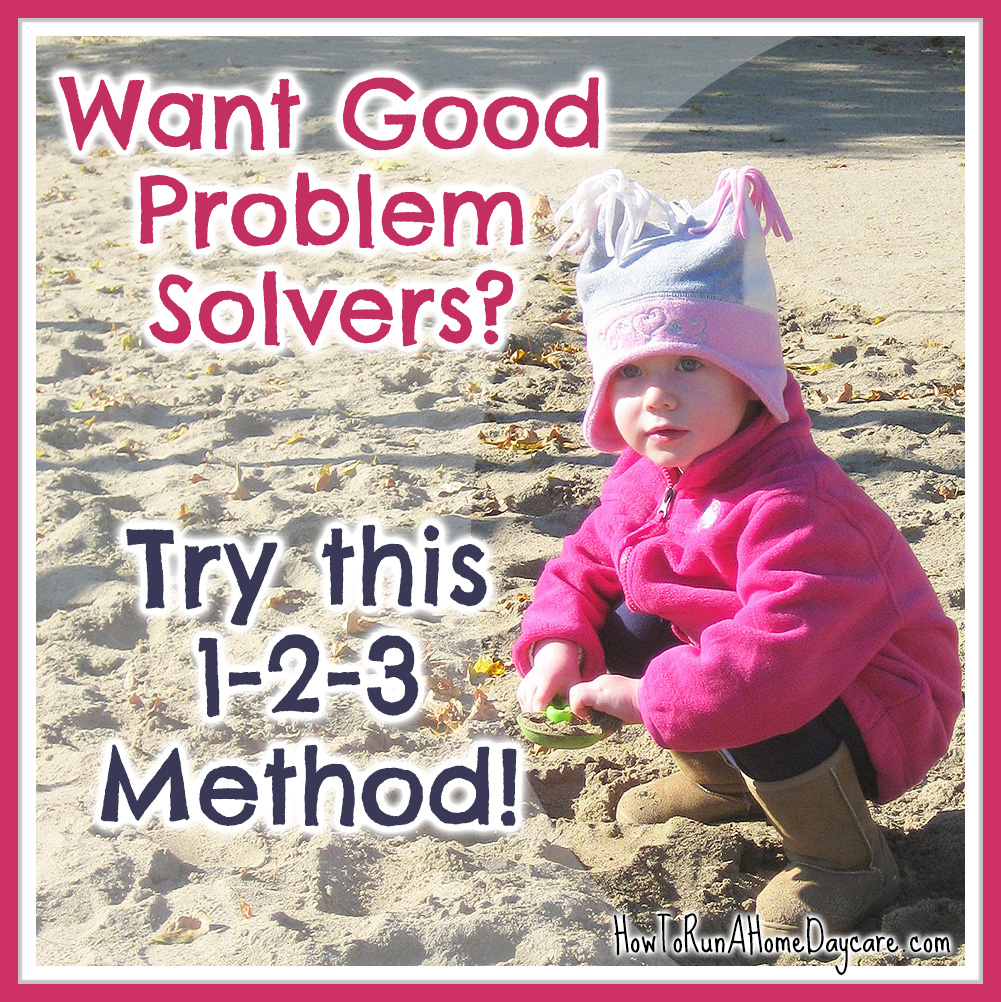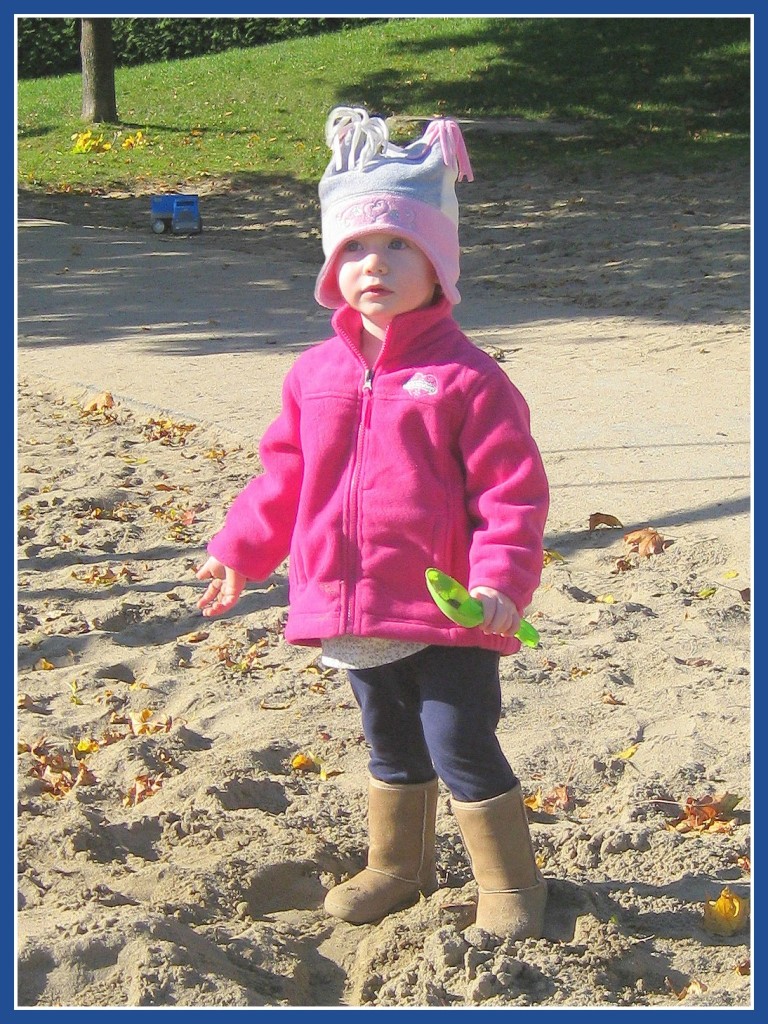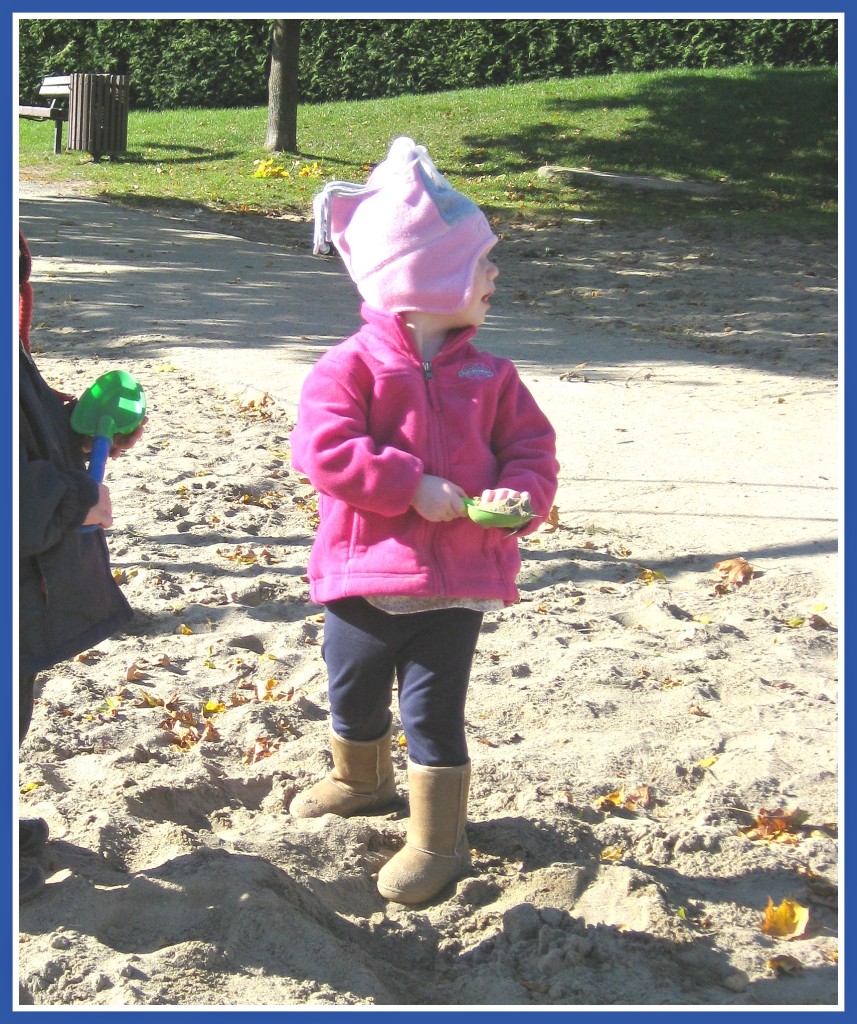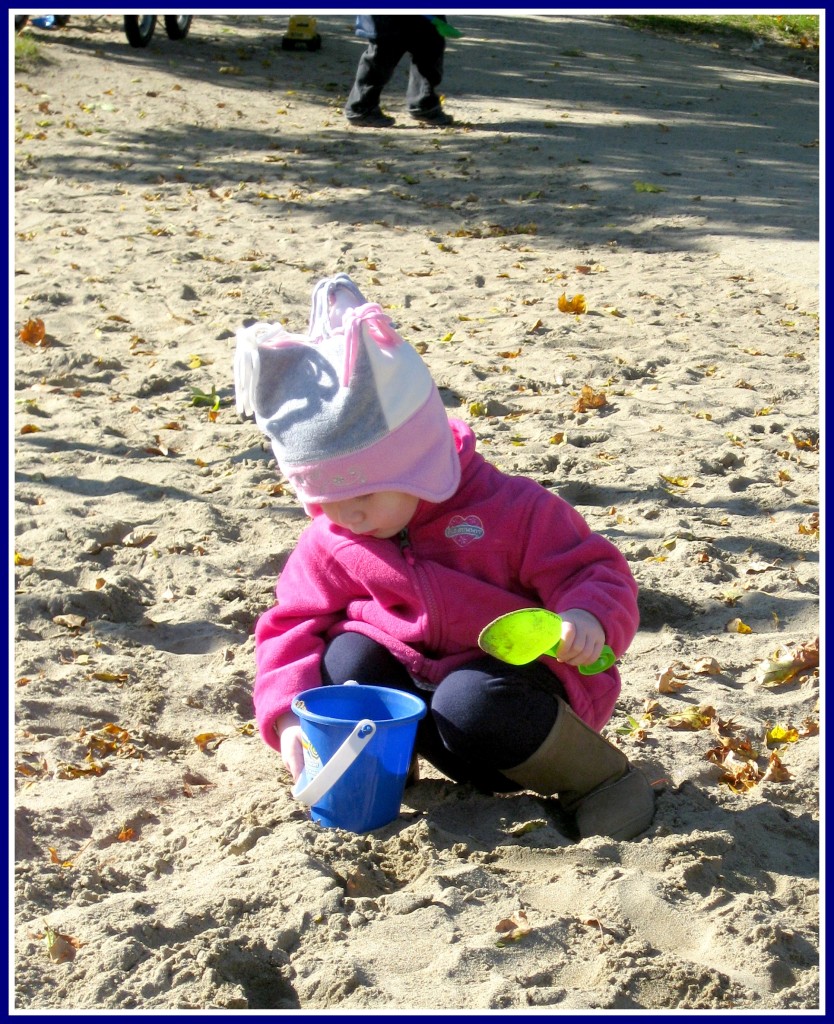Last week I shared my 1-2-3 Problem Solving Method and showed you how to apply it with older children. Today I’m going to explain how I use this method with my younger kids. Children who are good independent problem solvers get along better with their peers and have higher levels of self-esteem.
Problem solving skills can be developed in any child through modelling and practice. I teach my toddlers how to problem solve with my 1-2-3 method;
-
What do you KNOW?
-
What can you TRY?
-
Who can HELP?
I take the opportunity to teach this method when I observe one of my two year olds stuck with a problem. I approach them and clarify the problem verbally.
My daycare child appears to want a bucket but I double check with her before I interfere. “Do you need a sand bucket for your game?”, I ask. She nods her head, ‘yes.’
Step 1-
I prompt her to tap into what she knows about the situation by asking her, “Do you know if we brought the sand buckets with us to the park today?” She shakes her head, ‘no.’
Step 2-
I will pause at this point and see if she looks around to see if the sand toy bag has been emptied nearby or if she looks towards the wagon we brought today. She simply looks at me so I ask her, “Where can you try looking?” She looks around the sand area and then back at me.
I verbalize my support of her first attempt by saying, “I don’t see any sand toys on the ground. Do you remember if we brought any in the wagon today?” She smiles and walks over to check the wagon. The wagon is empty, so she returns to me.
Step 3-
She looks at me and says the wagon was empty. I then help her out by saying, “I know we brought three sand buckets to the park today, ask a friend to help you find one.”
If the child is very frustrated at this point, then I offer to help them. If the child is engaged and focused on working through the problem solving steps then I will encourage them to ask a friend to help them. Whenever they ask a friend it accomplishes two goals. First, it leaves me free to attend to another child and second, it helps form a habit of cooperation within my daycare group. Pretty soon they will turn to a friend first before they come to me. It’s amazing how much two little kids can accomplish together!
If the friend couldn’t help, this is the point where I will offer my assistance in helping her find a bucket. Thinking aloud is a good modelling technique to use while you help a child search for an item. For example, I might say, “Mmmm, I wonder if the buckets are over by the slide? Let’s look and see. They aren’t here. Maybe they are near the swings?”
As it turned out, another child had brought the buckets under the slide and left them there. We found them together and she was delighted in the end. Repeat this 1-2-3 problem solving method often and you will soon see the children adopting more independent problem solving behaviour in your home daycare.
What methods do you use for encouraging problem solving behaviour? I’d love to hear your comments below!





 I’m a former elementary school teacher, and homeschool mother of two, who runs a Waldorf inspired home childcare/preschool.
I’m a former elementary school teacher, and homeschool mother of two, who runs a Waldorf inspired home childcare/preschool.  Sign up now for my newsletter to receive my free "Home Daycare Curriculum."
Sign up now for my newsletter to receive my free "Home Daycare Curriculum."